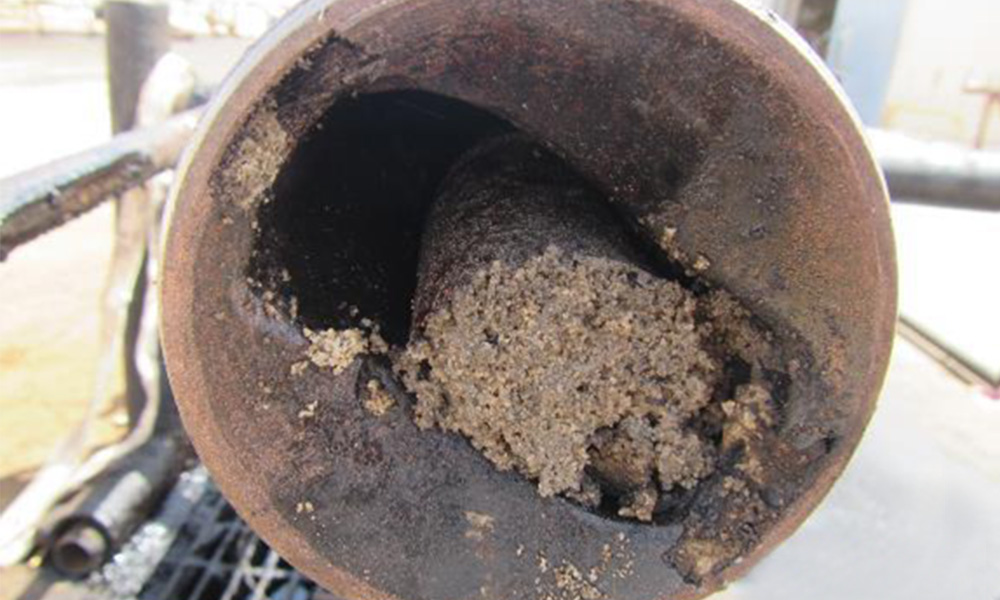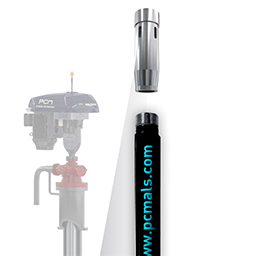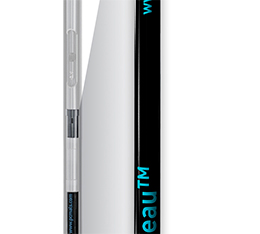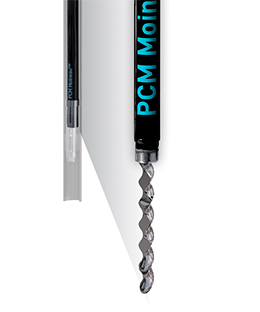Sand management > How to pump sand and solids in Artificial Lift well ?
Sand management in Artificial Lift wells is one of the most critical challenge when pumping Heavy Oil to ensure steady production. Solids is demanding on the pump, often plugging it and promoting rapid pump wear.
PCP is the first choice for solids’ production, reducing drastically well intervention versus other Artificial Lift systems. PCM pumps were some of the first PCP’s pioneering Cold Heavy Oil Production Sand (CHOPS) in Alberta in the 80’s. Thousands of PCM pumps have proven to be top performers in these very demanding conditions.
PCM has full range of products and accessories dedicated to sand management avoiding sand clogging and abrasion.
- PCM Heavy Lift, a dedicated pump geometry (short pitch and large flowing area)
- Abrasion resistant elastomer
- Specific accessories (Top bushing, Paddle rotor, Flush valve)
Solids settling at discharge
Accumulation of particles settling in tubing column could generate production losses and workover intervention to unplug your pump.
Produce the sand
Reducing Tubing size will increase fluid velocity and help to produce the sand in the fluid. Rod/ tubing clearance has also to be carefully reviewed.
A dedicated pump range with optimized rotor major diameter is available for small tubing.
Flush the tubing
Each time the pump stops, the patented Automatic Tubing Drain (ATD) drains the fluid above the pump into the annulus, so that solids do not land on the pump discharge
Pump abrasion
PCM Application Engineering can support you to define the highest running life with lower pump torque for your application.
Consult our advice for proper pump selection
Avoid crushing particles
PCM Heavy Lift range is a selection of PCP geometries dedicated to the harsh environments of high viscosity and solids production. A large flowing area combined with the shortest stator pitch, enables the most efficient cavity fillage for high viscosities. An aggressive rotor swept angles efficiently produce solids through the pump without excessive torque and wear.
Increase elastomer resistance
Soft elastomer (194 and 205) are proven to be superior as they can overcome the toughest abrasion conditions.
Maintain pump efficiency
Cavity geometry with large flowing area and short pitch is key to ensure proper fillage in high viscosity wells.
Rotor sizing is crucial to manage internal leakage and associated abrasion. A proper tightening will avoid sand jetting without applying overstress on the elastomer.
Increase rotor resistance
Hard coating chrome plated rotor or tungsten carbide special coating increase rotor run life in toughest conditions.
Sand plugging at the intake
Adding pump accessories is helping to reduce pump intake plugging issue.
Consult our range of ALS accessories
Maximize PCP inflow
Top bushing replaces the traditional tag bar to create a free flowing area at the pump suction.
Prevent sand plugging
Add to your rotor the paddle option, a typical 2ft rotor extension, which will help avoid the formation of plugs at the pump inlet.
Maintain solids in suspension
An alternative option is to use Reverse flow system, which is composed of 2 PCP’s:
- a production pump to produce your fluid
- a recirculating pump to maintain solids in suspension at the production pump intake.





